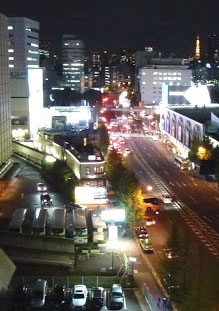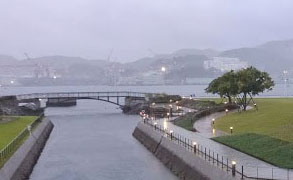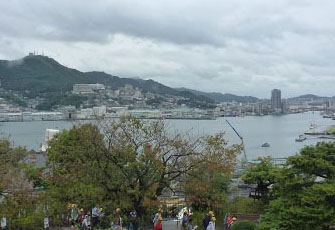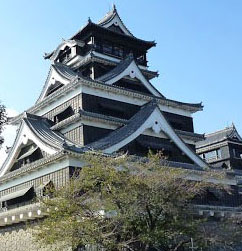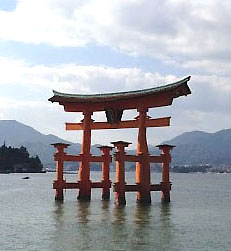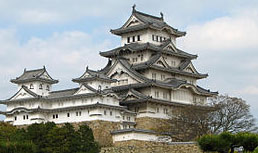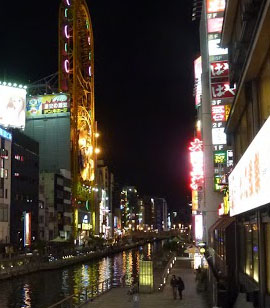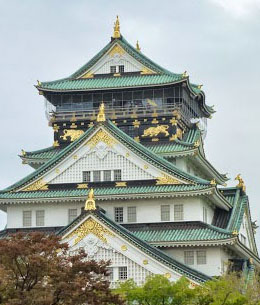|
Trip Summary:
We went to Taiwan in October to celebrate Mei-Ching's mother's 100th birthday in Kaohsiung. The birthday banquet was attended by nearly 170 guests, including four generations of the Chens. The party took Chester, Mei-Ching's oldest brother, a year to plan and execute. The event was a resounding success. My mother was very happy to see all of us, especially the great-grandchildren. A good time was had by all. We then flew from Taipei to Narita and visited Japan for 8 days before going back to Boston. The multi-city air tickets we searched on Kayak.com and then purchased from AA.com cost only $20/pp more than if we flew round-trip Boston <--> Taipei. This was our 4th visit to Japan, and since we had been to Tokyo and Kyoto before, we focused on Kyushu and western Japan for this trip, visiting castles along the way. We flew from Tokyo to Nagasaki, and then utilized a 7-day JR Rail Pass to travel eastward, from Nagasaki --> Kumamoto ---> Hiroshima / Miyajima --> Himeji --> Osaka, then to Tokyo to catch our flight home. However, if you have never been to Tokyo or Kyoto, they should be your top destinations to visit while in Japan. From Kyoto, you can take day trips to Osaka, Nara, Himeji, or Hiroshima, depending on your interests. Our Japan-2013 travel map is below. All the teardrops denote places we stayed overnight. The purple pin indicates Himeji, where we visited but did not stay overnight.
We flew AA from Boston to Taipei for leg 1, then flew from Taipei to Narita for leg 2. Leg 3 was from Narita to Boston. You may try pricing leg 3 to start from Kansai airport (near Osaka) if that will save you time and a train fare back to Tokyo. In Japan we utilize a 7-day JR rail pass (28,300Yen/pp) to travel the distances. For various kinds of Rail Passes in Japan, prices and requirements, see https://www.japan-guide.com/e/e2357.html You must purchase a JR rail voucher from one of the authorized overseas travel agencies before arriving in Japan, then exchange the voucher for a rail pass at a large JR train station with your passport. Here is the list of authorized sellers in North America: https://japanrailpass.net/area_04.html We purchased online from JTB USA, paid $14 for FedEx shipping, and received them after 2 business days. (NOTE: The spelling of your name on the JR voucher must match that of your passport.) Japan Domestic flights: We used 7500 AA miles (per person) to redeem for our JAL domestic flight from Tokyo Haneda to Nagasaki. We read that you may also redeem 6000 United miles for an ANA domestic flight in Japan. Moreover, as a foreign tourist visiting Japan, you may also purchase a discount Experience Japan or Yokoso fare for 10,000Yen per segment. See http://www.japan-guide.com/e/e2364.html for details. Online Resources:
We chose hotels based on word-of-mouth from Fodor's Japan forum and checked against TripAdvisor's photos and reviews. In general, a hotel near a train station would be convenient for coming and going, and there are often a lot of eating options near train stations. Also, local buses or trams will stop at train stations. However, there were a few locations where we opted to stay closer to the town center. In those cases, we took a taxi to the hotel, and then a taxi back to the train station when leaving. We used booking.com to book a few hotels (Dormy Inn and Hotel Granvia) at the recommendation of travelers on Fodor's Japan forum. One of the advantages of using Booking.com was that you do not pre-pay. Although you have to supply your CC number in case of a no-show, you pay the hotel in local currency after checking in. Cancellation was also painless, usually 24 or 48 hours prior, depending on each individual hotel's own cancellation policy. (However, always compare prices with offers from a hotel's own website to see which gives a better deal.) Based on our stay in Nagasaki, we found Dormy Inn Hotel ( http://www.hotespa.net/Resort/ , or http://www.hotespa.net/DormyInn/en/ ) to be a very good value. The quality was similar to Hampton Inn, and the big bonus was that every Dormy Inn came with an onsen (hot spring bath) on the premises. Breakfast at 1100Y/pp additional was very good. However, as in the case of all hotel chains, not all Dormy Inns were created equal. Some may be newer than others, and some may be more conveniently located than others. Do your homework by studying the city map on Google and reading TripAdvisor reviews. In general, when booking rooms in a Japanese business or budget hotel, pay a bit more to book a twin room for more space, because a double room could be very tiny. Toyoko Inn (東橫) is a safe fall-back lodging option when you cannot find anything better. It is a successful formula that has been replicated in many locations throughout Japan. They are very clean, always a hotel near train station, less than USD$100/night, including breakfast, WIFI, washer/dryer on premises, not to mention a well-built multi-language website with excellent access maps. What's not to like? The room can be a little cramped like a cruise ship's cabin, but they get the job done. [INTERNET CONNECTION TIPS]: Many Japanese hotels do not provide WIFI in guest rooms, but they usually provide Ethernet cable in guest rooms. So we came prepared. We purchased a palm-size mini-router from Amazon for this trip and hooked it to the LAN line cable in our room. Instantly, we had a wifi network in our room, allowing multiple devices to connect to the internet. Laundry:
We found food in Japan very reasonably priced at today's $1USD = 100YEN exchange rate, especially when we ate Japanese-style food where locals eat. All the prices shown next to their respective plastic models displayed outside a restaurant were what you would pay in total, because the taxes were already included in the prices, and there was no tipping. (However, at higher-priced restaurants or hotels you’ll have a 10% or 15% service charge added to your bill.) We purchased several delicious bento boxes inside train stations before boarding trains, and also assembled a few meals out of mouth-watering ready-to-go food from large department stores' Food Hall on B1 level. The quality was surprisingly good. Many restaurants were also located on the upper levels. Our first dinner in Nagasaki was at a department store restaurant because it was raining very hard due to typhoon Francisco and all the restaurants along the waterfront were closed. Itinerary with links to picture pages: Day 1 - Arrival in Tokyo Photo (10/23/2013 Wednesday):
At Narita airport we stopped at a JR East Travel Service Center to exchange our JR vouchers for passes, specifying our 7-day pass to start from tomorrow (because we needed the pass to be valid on the 30th for the long train ride back to Tokyo). We reserved a few Shinkansen train seats for the next days, also purchased a one-way version of Suica & N’EX card for each of us. (However, this combo-ticket was discontinued in April 2014, so I guess you'll have to purchase a Narita Express train ticket separately. Look up www.hyperdia.com for train schedules and ticket prices, or take an Airport Limousine Bus for 3100Yen, depending on which one is more convenient for your destination.) The SUICA card is an IC card that can be used for riding subways and trams in many big cities in Japan. We used it in Osaka to ride the metro. You tap it on a reader on the way in, and tap it again when exiting, so that the correct fare can be debited from your card. You can add money to it, and you can return a SUICA card for a refund (minus a fee of 210Yen) at a JR office, because SUICA cards were issued by JR (Japan Railway). It was 60-min on the Narita Express train from NRT to Shinagawa. Narita Express trains are reservations-only. After Tokyo station, some trains may split - some cars may go in one direction and others may go another. That's why when booking seats on Narita Express you'll need to tell the ticket agent your destination stop, so that he may assign a seat in the correct car for you. (NOTE: If you have large bags, there are easier means to travel from Narita airport to downtown Tokyo hotel using Airport Limousine Bus. Any good guidebook should cover this topic.) Day 2 - Arrival in Nagasaki Photo (10/24/2013, Thursday):
It was a pleasant sight when we exited the airport bus at "Nagasaki Shinchi" stop, walked a few steps to the street corner and immediately saw the white, glistening Dormy Inn building in front of us. We packed only 21-inch roller luggage for this trip, but our duffle bag was getting heavy, so a short walk was always welcome.
Our twin room in Dormy Inn Nagasaki Shinchi was very pleasant.
It was raining lightly outside, so we took umbrellas with us for a walk. We had expected Nagasaki to be rainy,
because of a familiar Japanese oldie,
"長崎は今日も雨だった" ("Nagasaki was rainy again today".
However, our original link to singer Teresa Teng's YouTube video was no longer available.) But when we walked to the cruise port area it was
pouring, so we ducked into a large department store to its 4th floor restaurant for
dinner. We had 釜飯, Kamameshi.
They were very good.
Day 3 - Nagasaki Photo (10/15/2013, Friday): There were only a few sights and activities we could not miss while in Nagasaki - the Glover Garden, Dejima Island, and eating Nagasaki Castella cake (長崎蛋糕). Glover Garden is a famous European-style residence sitting on a hilltop with commanding views of the harbor. Built in 1863, it was the setting for the story of Puccini’s opera Madam Butterfly. The house was named after Thomas Glover, a Scottish entrepreneur and a key figure in the industrialization of Japan. There was a scene in Madame Butterfly where jo-jo-san stood in front of a window watching Lieutenant Pinkerton's ship sailing into Nagasaki harbor.
After the Portuguese were expelled from Japan, a Dutch trading factory, formerly located in Hirado 平戸市, was moved to Dejima. The Dutch workers, the only remaining westerners allowed in the country, were restricted to Dejima during Japan’s 200-year isolation period. Today the whole area has been restored and is maintained as a museum. Based on this history, we can understand why Tokyo train station was modeled after Amsterdam's Central train station, and why the Japanese royal family maintained a special relationship with the Dutch royal family. Nagasaki Castella cake (長崎蛋糕) - when we were in Lisbon in 2009, we saw these long sponge cakes from outside bakery windows. We could not help uttering, "That's Nagasaki cake!". A cake that when as kids in Taiwan we often received as special treats from guests visiting our parents. (Those cakes we received were made in local shops in Taiwan.) So one of our goals during this trip was to EAT NAGASAKI CAKE IN NAGASAKI! We sampled many slices of Nagasaki cake in an elegant shop called 和泉屋 (Izumiya) near the walkway to Glover Garden. Nagasaki Castella has many flavors; green tea, honey, brown sugar, red bean etc, all were very delicious, but we did not buy any to bring home because they were sold in long boxes and we did not have space in our luggage. After getting back to the hotel, Vincent checked online and learned that Red Sox lost game 2 of the World Series. Day 4 - Kumamoto Photo (10/26/2013, Saturday): We came to Kumamoto to see Kumamoto-jo (熊本城). Not only because Kumamoto castle is one of the top 3 castles in Japan (although many parts of the castle were reconstructed), but it was also the place where the legendary 16th-century swordsman Miyamoto Musashi ( 宮本武藏 ) spent the last 5 years of his life. Miyamoto Musashi came to Kumamoto in 1640 when he was 57 years old. The Lord Hosokawa Tadatosi was very happy to welcome him as a guest of honor, took him into his service, gave him 300 koku of rice annually and a house at a corner of Chiba Castle. Musashi stayed there in Kumamoto for five years until he died in early summer of 1645.
The castle was impressive. We went up to the top of the 6-story keep (or donjon, or 天守閣, all referring to the fortified central tower of a medieval castle). We also visited the palace nearby where the castle lord and his family lived. The looong meeting hall where the castle lord and his retainers met for rituals and big events was just like a Japanese period movie come to life. Near the castle entrance were many eateries, some advertised with banners shouting "馬刺し" (Horse sashimi, pronounced as ba-sa-shi). Yikes, Mei-Ching quickly walked away from those restaurants. Vincent later bought a meat bun that claimed to have horse meat in it. He said the meat filling was heavily spiced, so he could not tell what horse meat tasted like. We had both lunch and dinner in the shopping arcade near our hotel in a 200-year-old restaurant full of locals. The restaurant was famous for its hand-made noodles, so all the set menu meals came with a side of noodle (hot noodle or cold noodle, your choice). A set meal was priced from $8 to $11, more abundant than what the same amount of money could buy from Daikanyama in Lexington. Day 5 - Hiroshima / Miyajima Photo (10/27/2013, Sunday): It took us about 100 minutes on the Shinkansen train from Kumamoto to Hiroshima. By the way, we pre-reserved seats on Shinkansen trains for every segment of our train rides. But the first five cars (cars 1 to 5) on a Shinkansen train are non-reserved seats, so if you have a Rail Pass and want flexibility, you may just show your Rail Pass and hop on a train, then find seats in cars 1 to 5. (What happens if you have pre-reserved seats and then changed your mind? Just return the reserved seats tickets to a JR office and get your new reservations. What happens if you miss your train? Again just bring the reserved seats tickets to a JR office to get new reservations, or discard them and hop on the next train to find seats in cars 1 to 5.)
Besides the huge shrine on the island, we also visited the Senjokaku Hall (豊国神社(千畳閣)) - started by Toyotomi Hideyoshi but remains unfinished. On the walk back to the ferry terminal there was a street full of souvenir shops, restaurants, and food stands. We purchased fish cake on a stick, delicious roast chestnut, and grilled oysters on the shell. Oysters from the Inland Sea (Seto Inland Sea 瀬戸内海) are a specialty of Hiroshima. In all, we enjoyed an afternoon on Miyajima island. Learned Red Sox lost game 3 after we came back to the hotel from Miyajima. A word about Hotel Granvia in Japan. It is a modern 4-star hotel chain owned by JR (Japan Railways). A hotel Granvia is usually located on top of a JR train station. We booked our Hotel Granvia Hiroshima via booking.com for about $123 USD/night (including 5% VAT and 10% service charge, but without breakfast). This rate was lower than the rate posted on Hotel Granvia's own website. We liked it and will not hesitate to stay at another Hotel Granvia in Japan. Incidentally, In Kyoto there is a very popular (but pricey) Hotel Granvia right on top of the Kyoto train station. Day 6 - To Osaka with a stop at Hemiji Photo (10/28/2013, Monday):
The Crowne Plaza is in a convenient location, 7-min walk to the subway Yodoyabashi station (淀屋橋駅) on the Midosuji line (御堂筋線). We used our SUICA card purchased on arrival at Narita airport to pay for our subway rides in Osaka. It was very convenient. We did not have to stop in front of a machine to buy tickets. Instead, we just tapped the card on a turnstile's reader then walked through. On this afternoon, we took Midosuli line to Nanba (or spelled as Namba, both translated to Hanzi 難波), the city center in the south. We had kaiten sushi (see our video clip on youtube), walked to Dotonbori (道頓堀) - crowded with many foreign visitors, saw the restaurant with the giant mechanical crab, Kani Doraku かに道楽. We also ate Takoyaki (たこ焼き, 章魚焼), but they were soft with gooey fillings inside, not crunchy like the octopus ball we had imagined, so they were not a hit with us. On a busy street corner in front of Takashimaya department store in Nanba, we saw a 3-man band playing a very familiar Japanese melody. The singer's hair and eyeglasses were styled as if he was from a way-back era. We stood watching, then gave the band a big applause. Vincent took a video of the singer singing. If you know the name of the tune, please let us know. [Addendum: In December of 2017, a kind viewer left a comment on Vincent's YouTube clip to tell us that the name of the tune is "かえり船" (Ka-e-ri-bune, 戦後の外地からの復員船を歌う, a Japanese end-of-WWII-era oldie), and the band's name is "東京大衆歌謡楽団". You may Google the song's name or the band's name to see more YouTube clips of them.] We had a fun evening in Nanba. Back at the hotel, we learned the Red Sox won game 4 of the World Series.
Day 7 - Osaka Photo (10/29/2013, Tuesday): Our room was on the 18th floor with a lovely view. It was a luxury to sleep in for once since we did not have to pack or catch a train.
We then took a subway to Kuromon Ichiba Market
(黒門楽天市場), where Vincent
bought and ate toro nigiri.
We also purchased delicious oden and roast Japanese sweet potato. All were very good and
inexpensive.
While in the castle, we met a Japanese female staff member, who told us that Koji Uehara (Red Sox's closer for the 2013 World Series) was from the Osaka area, and that they were all very proud of him. Back at the hotel, we learned that the Red Sox won game 5 of the World Series. In the evening, we walked north from ANA Crown Plaza toward Kita Shinchi (北新地), the city center in the north. We reached the neighborhood of Osaka station in about 15 minutes on foot. We saw a Hansin (阪神) department store on our map, so we went to buy pastries from its bakery shop for our breakfast tomorrow morning, but we saw so much ready-to-go food on the B1 level that we wound up assembling a nice dinner from there. Day 8 - To Narita airport to catch AA flight home Photo (10/30/2013, Wednesday): We left our hotel around 9:30am by taxi to Shin-Osaka station. From there, we boarded a Shinkansen train to Shinagawa (品川, one stop before Tokyo station), then changed to a Narita Express to Narita airport. We wanted to go to Shin-Osaka station with plenty of lead time to buy bento boxes to bring on the train for lunch. Japanese Shinkansen trains were very smooth and enjoyable. Four hours later we were at Narita airport terminal 2 checking in at the AA desk. Vincent enjoyed listening to music stored in Apple gadgets on the long flight with the wireless + noise cancellation Parrot Zik headphones which he received as a birthday gift. It made the long flight bearable. He also purchased internet time on the AA flight home so that he could follow the progress of Game 6 of the World Series. By the time we touched down in Boston, we learned that the Red Sox had won the 2013 World Series championship. Everyone we saw in the Logan airport was smiling. What could be a better time to land in a city when the whole town was so joyous?
---------------------- Epilogue -------------------
|
